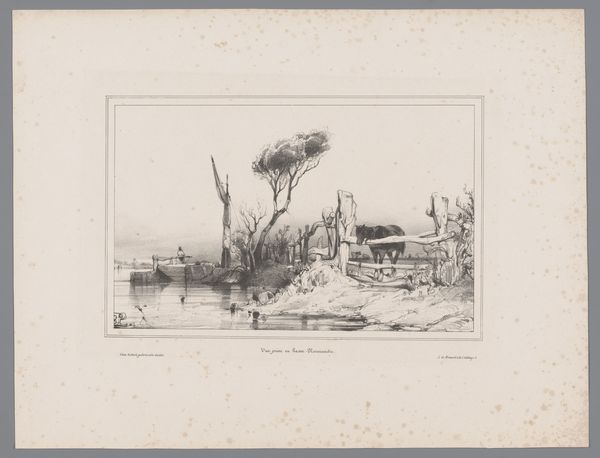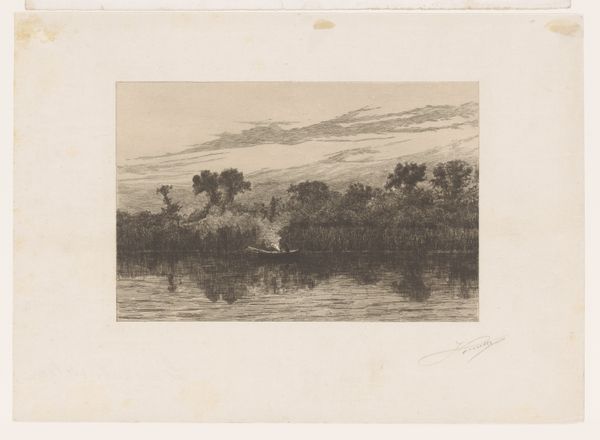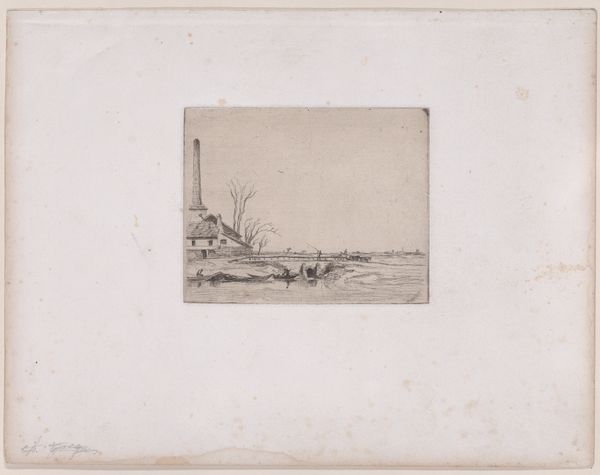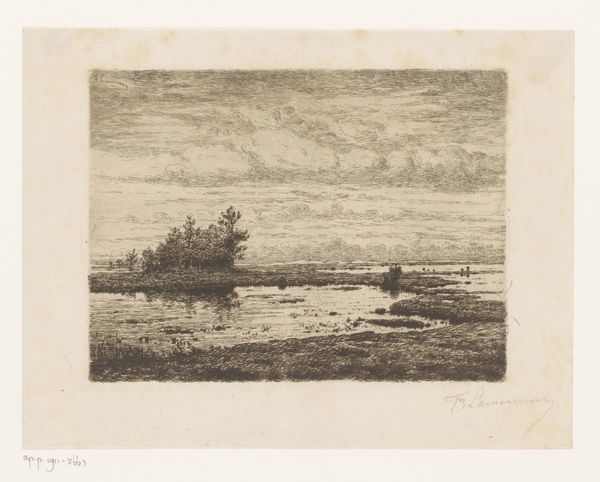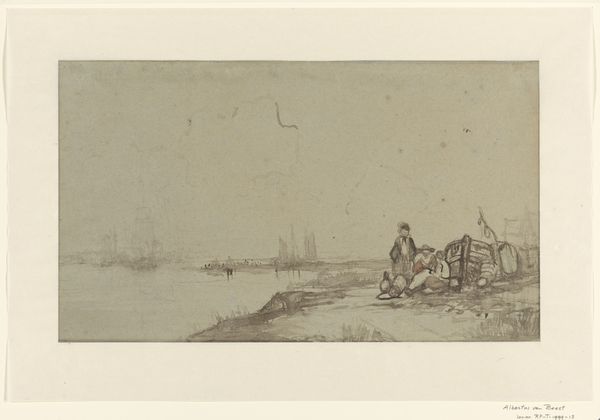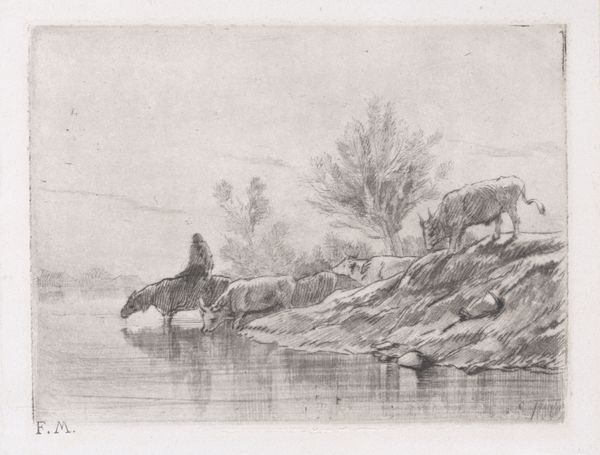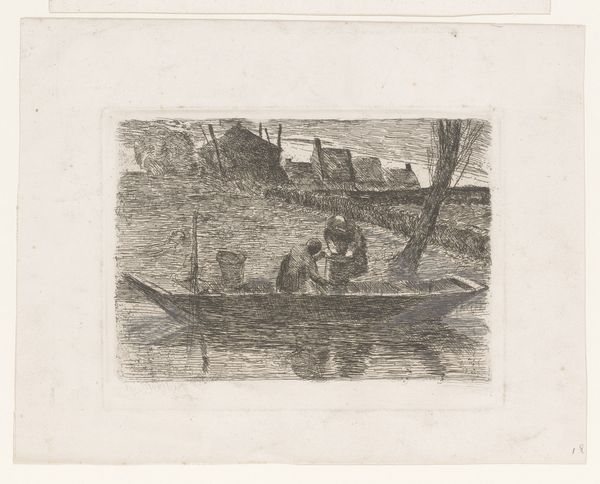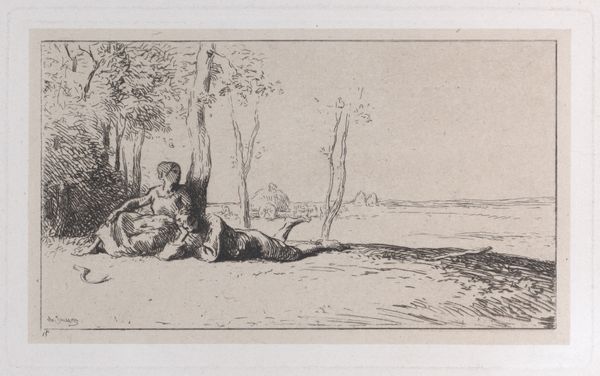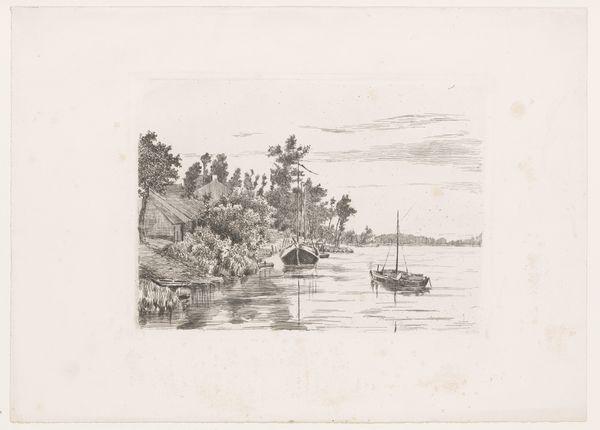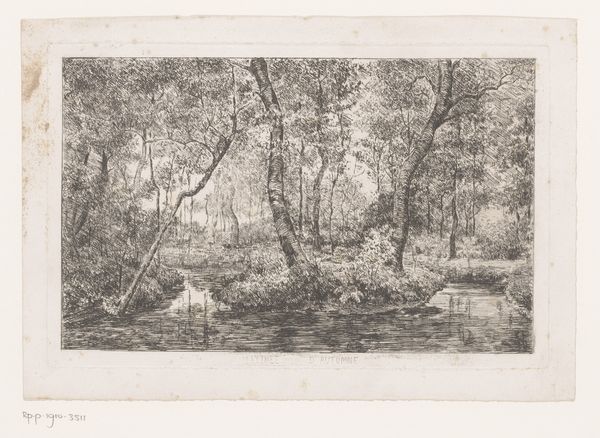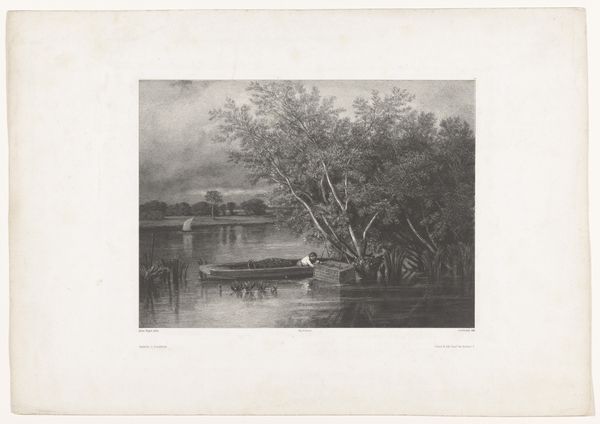
drawing, print, etching
#
drawing
# print
#
etching
#
landscape
#
realism
Dimensions: Sheet: 9 5/8 × 12 5/8 in. (24.5 × 32 cm) Plate: 6 5/16 × 7 5/16 in. (16 × 18.5 cm)
Copyright: Public Domain
Editor: Here we have "The Watering Hole," an etching by Charles Jacque, created in 1848. There's a sort of hazy, rustic quality to it that I find quite calming. What’s your read on this work? Curator: It evokes a certain pastoral idyll, doesn’t it? But I think it’s important to also consider this through a social lens. Rural life was often romanticized in art, yet the reality for many agricultural workers was one of hardship. How does this image negotiate those contrasting realities, do you think? Are these contented cows, or beasts of burden momentarily at rest? Editor: I see your point! Maybe there's an element of social commentary beneath the surface… But also, I'm curious, does the technique of etching itself, the way Jacque renders the details, inform our understanding? Curator: Absolutely. Etching, with its fine lines and tonal gradations, can capture both the beauty and the grit of a scene. The way he uses light, almost blurring the figures, lends itself to considering ideas about transience. Consider who this landscape is 'for' and who it might be excluding through idealisation, while bearing in mind the Industrial Revolution that was contemporaneously disrupting rural life. Does this image reinforce or question power structures? Editor: That really makes me think differently about what I initially saw as just a peaceful scene. Curator: Art always exists in dialogue with its time. Examining these images allows us to grapple with history’s complexities. Editor: That's fascinating – a whole new way to appreciate art! Curator: Indeed. It encourages us to see beyond the surface.
Comments
No comments
Be the first to comment and join the conversation on the ultimate creative platform.
